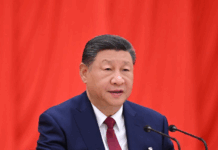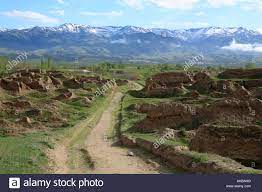Human development is the process of enlarging people’s opportunities and improving their well-being. The concept of human development was developed by Mehboob ul Haq, the famous economist of Pakistan. He argued that the current measures for human progress have failed to account for the purpose of development to improve human lives. The basic capabilities valued virtually by everyone include good health, easy access to knowledge, and a decent standard of living, which many believe are the basic blocks of well-being and opportunity. These core capabilities are largely valued around the globe.
According to the CIA World Factbook, Tajikistan is a landlocked state in Central Asia with an economy dependent on “mineral extraction, metal processing, agriculture”, and labour migrants. The positive dynamics of economic growth are fundamental to its socio-economic status. Its mid-term macroeconomic policy focused on reducing inflation and maintaining a decent living standard. To give impetus to economic growth and sustainable human development, the Tajikistan government has consistently made efforts to organize sectoral and regional programmes and then shape the National Development Strategy in 2015. In many respects, the people and government have attained remarkable achievement in meeting the challenges of human development.
A few decades ago, the people were not only substantially less healthy but also less educated. The newly independent states blamed the USSR for the decline of health, education, nutrition, and jobs. The main growth of the economy is based on education, health, opportunities for business, and quality labor provision. Research shows that the investment in human development programmes is more effective for a country’s progress and prosperity. Therefore, the developing countries have to ensure that all children are being nourished better and going to school to become productive citizens in an increasingly competitive and integrative global economy.
For this, Tajikistan also has worked to alleviate the poverty rate from 80 percent to 30 percent of the population between 2000 to 2017. A World Bank report said 17 percent of children under five are stunted and only one child in ten aged three to six years benefits from an early learning programme. Today, the human capital index of the World Bank shows that a child born in Tajikistan is expected to be 53% as productive, as they are growing up with full health and complete education. The country manager of the World Bank for Tajikistan has said, “Improving school readiness, educational outcome and physical and mental health will lead to more productive and healthy adolescents and adults”. Further, “we are satisfied by Tajikistan’s effort to take a holistic approach to Early Childhood Development, benefitting today’s children and tomorrow’s workforce.”
According to a report from the World Health Organization, the pace of health reforms in many aspects of the health system has been slow because Tajikistan has spent little per capita on health. The public financing depends upon local and regional establishments, thus regional inequalities undermine the range of health system goals, financial protection, equity, efficiency and quality. Quality of care is another challenge, due to insufficient and inadequate training, lack of clinical guidelines, underuse of generic medicines, poor equipment and infrastructure and preserved financial encouragement for doctors.
The primary objective of health reforms is to strengthen health care, but it is suffering from low priority and underinvestment in Tajikistan. Although a package for primary healthcare has been introduced, it has not rolled out all over the country. The National Health Strategy (2010-2020) envisages reforms in health financing, a capitation-based payment for primary health and doubling health expenditure.
The strategy is to facilitate and support the healthcare sector. The government has begun modernizing its resources, financing system, and clinical base as well the organization of healthcare and services. Due to economic growth and constant government attention, positive impact has been witnessed in the development of the health sector. Therefore, the rate of maternal and child mortality has decreased in the last decade. The strategy and efforts for healthcare development resulted in a reduction of the rate of morbidity of communicable diseases, especially in vaccine-preventable diseases. The training of doctors and nurses has become a priority. More effective measures have been taken to provide healthcare and services, network facilities, and increasing bed capacity. The supervision of pharmaceutical and medical performance has been improved in the last decade. Today, provision of health facilities to the population has taken a strategic turn towards a primary healthcare model.
The healthcare system is influenced by the Soviet legacy. Its rank is 129 as the human development index of 188 countries in 2016. In the post-Soviet regime, the healthcare facilities have decreased due to poor quality of nutrition, insufficient water supply, and a weak system. The efficiency of the healthcare system and mechanisms are also weak. Reforms are being made to strengthen the healthcare system but it is still running slowly.
The National Development Strategy of the country is also improving productivity, earning, and access to formal jobs by strengthening local value, small producers, and rural SMEs. Therefore, Tajikistan can attract and connect people to jobs through empowering the population by a set of quality nutrition, good health, valuable education and trained and skilled labour.
Post-Soviet life expectancy fell to 66 for men and 73 for women in Tajikistan. The fertility rate, which was 6.9 children per woman during 1960-1980, decreased to 3.4 by 2016. The mortality rate in children is falling fast and the nutrition of children is rising in Tajikistan and under-nutrition in health has become a challenge in rural and remote areas. Unbalanced nutrition leads to poor mental health. Poor maternal nutrition during pregnancy threatens the chance of safe delivery and healthy babies. Malnutrition, dietary factors, and lack of awareness about healthcare cause high prevalence of diseases and directly impact the economy. The lack of healthcare of the masses is a key bottleneck to a country’s development and progress.
According to a 2017 health survey, 18 percent of under-five children are suffering from stunting and nutritional deprivation, six percent are wasted, and more than eight percent are underweight. Children under two are lost in wasting and underweight while stunning is prevalent among children aged 24-35 months. Forty percent of children are anemic and only 36 percent mothers breastfeed for the first six months. That’s why 37 percent of children suffering Vitamin A deficiency and 12 percent Vitamin D.
According to an EU-funded project report, the country has shown excitement over moving towards the education space. Tajikistan’s institutional diversity along with several dimensions fuels the creation of new programmes and reflects the needs of an emerging knowledge-based economy to meet market needs. The special focus given to structures of education in Tajikistan is initiated by a global programme related to industries and technology.
The government has set education as a tool for human capital formation to economic growth. The National Strategy for Education Development 2020 aims at modernizing education with profession and skill to satisfy the needs of labour and to build the capacity of the country. The government has aimed at reforming educational standards with the curricula through modernization and with the participation of employers.
Since the USSR disintegrated, de-urbanization and deindustrialization remained the key phenomena of Tajikistan’s economy. The structural changes in the economy took place since 1991 and small industries lost their ground. Deindustrialization reduced job opportunities and increased unemployment, particularly in rural areas. Today, the state has taken some measures to develop the economy but there is still much room for further improvement.
The low level of aluminum processing and agricultural production has hampered the growth of employment in these sectors. An ill-conceived privatization of certain industries and companies liquidated jobs. No comprehensive policy for labor productivity and security is present in the rural areas, which produce two-thirds of the country’s labour force. According to a World Bank report, women are under-represented in the labour force and the trend is not encouraging. Employed women like the public sector but are also involved in unpaid family businesses.
Another World Bank report said that although Tajikistan’s economy has not produced sufficient jobs for its rapidly growing workforce, particularly its burgeoning youth population, the government has set out a new National Development Strategy. It aims to create new jobs in the formal and private sectors, improving the quality of existing jobs, and providing access to better opportunities, including low to higher quality jobs, with a focus on vulnerable workers. With the promotion of the private sector, and with the help of entrepreneurs and investment, new opportunities for business and sustainable jobs are expanding.
The National Development Strategy of the country is also improving productivity, earning, and access to formal jobs by strengthening local value, small producers, and rural SMEs. Therefore, Tajikistan can attract and connect people to jobs through empowering the population by a set of quality nutrition, good health, valuable education and trained and skilled labour. It seems Tajikistan will soon overcome the challenges of human development and will create innovation through improvisation and will be a startup nation.
























Excellent Dr.
good analysis of Tajikistan
Good analysis